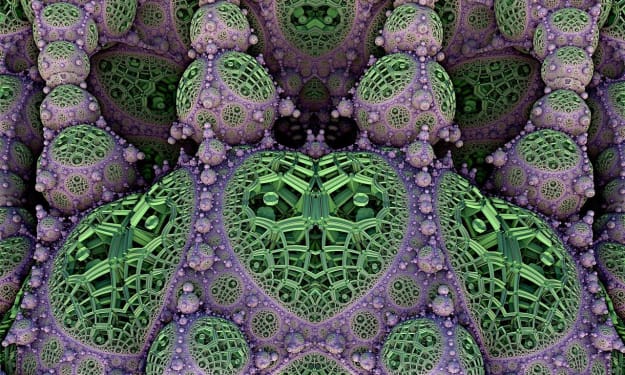Can AI Generate Image?
Could I Generate My Lover's AI Image?

1. Introduction
As artificial intelligence (AI) continues to evolve, it has become capable of generating highly realistic images that closely resemble real photographs. This has led to a growing interest in using AI to generate images of people who may not even exist. However, the idea of generating AI images specifically of our loved ones raises important questions about ethics, privacy, and emotional implications.
2. Understanding AI-generated images
Before diving deeper into the topic, let's first understand what AI-generated images are. These images are created by feeding large amounts of data into AI algorithms, allowing them to learn patterns and generate new images that align with the given data. The AI models can analyze facial features, expressions, and other visual elements to produce highly convincing images.
3. The concept of generating AI images of loved ones
The concept of generating AI images of loved ones raises both excitement and concern. On one hand, it offers the possibility of preserving memories and emotional connections with those who are no longer physically present. On the other hand, it challenges the boundaries of privacy and raises ethical questions about consent and the right to control one's own image.
4. Ethics and privacy concerns
Generating AI images of loved ones brings up significant ethical considerations. It is crucial to obtain explicit consent from the person whose image is being used, as their likeness is being replicated without their direct involvement. Additionally, there is a risk of AI-generated images being misused or manipulated for malicious purposes, highlighting the importance of privacy safeguards and regulations.
5. Emotional implications
Emotionally, the idea of generating AI images of loved ones is a double-edged sword. On one hand, it may provide solace and comfort, allowing individuals to maintain a visual connection with their loved ones. On the other hand, it could potentially hinder the healing process and impede the acceptance of loss by creating an artificial sense of presence.
6. Technological advancements in AI-generated images
Advancements in AI have significantly improved the quality and realism of generated images. Deep learning models such as generative adversarial networks (GANs) have revolutionized the field by enabling the creation of highly detailed and authentic-looking images. These developments have brought us closer to generating AI images that are virtually indistinguishable from real photographs.
7. The process of generating AI images
The process of generating AI images involves training a neural network on a vast dataset of images. The network learns the visual characteristics, facial features, and other relevant details from the training data, enabling it to generate new images based on the learned patterns. However, the accuracy and quality of the generated images heavily depend on the diversity and quality of the training data.
8. Training data and its impact on accuracy
The quality and diversity of the training data used to train AI models play a crucial role in the accuracy and realism of the generated images. A more diverse dataset that encompasses a wide range of ages, ethnicities, and features will yield better results, ensuring that the generated AI images are not biased or limited to a particular subset of the population.
9. Potential applications of AI-generated images
Apart from personal uses, AI-generated images have the potential for various applications. They can be utilized in the entertainment industry, enabling realistic visual effects and reducing the dependency on human models. In medicine, AI-generated images can aid in reconstructive surgeries and help patients visualize potential outcomes. However, ethical considerations and regulations must be in place to ensure responsible usage.
10. Legal considerations and regulations
As the technology surrounding AI-generated images continues to evolve, it is essential to establish legal frameworks and regulations to address the associated challenges. Laws regarding privacy, consent, and intellectual property need to be updated to protect individuals from potential misuse and unauthorized replication of their images.
11. Emotional connection and authenticity
One of the key concerns with generating AI images of loved ones is the authenticity and emotional connection they can provide. While AI-generated images may resemble the physical appearance of a person, they cannot fully replicate their essence, personality, or emotional depth. It is important to recognize that AI images, despite their realism, are ultimately representations rather than true substitutes for genuine human connection.
12. Limitations and challenges
Despite the progress made in generating AI images, there are still limitations and challenges that need to be addressed. Variations in lighting conditions, different angles, and complex expressions can affect the accuracy of the generated images. Additionally, the current computational power required for generating high-quality AI images can be prohibitive for everyday users.
13. Public reception and societal impact
The public reception of AI-generated images of loved ones is likely to be mixed. While some may embrace the concept as a way to preserve memories and emotional bonds, others may express concerns about the potential devaluation of genuine human connection and the erosion of privacy. Society as a whole will need to navigate these complex issues and strike a balance between technological advancements and ethical considerations.
14. Future possibilities and advancements
Looking ahead, the field of AI-generated images holds immense potential for further advancements. As AI algorithms continue to improve, we can expect even more realistic and accurate representations of people. However, it is crucial to proceed with caution, maintaining a thoughtful approach that takes into account the ethical, emotional, and societal implications.
15. Conclusion
In conclusion, the ability to generate AI images of loved ones presents a fascinating but complex realm of possibilities. It raises important questions about ethics, privacy, emotional connections, and the limits of technological advancements. As we continue to explore this field, it is essential to approach it with sensitivity, ensuring that we strike a balance between harnessing the benefits of AI and preserving the authenticity and emotional depth of human relationships.
About the Creator
Ayan Das Sharma
"Powering Tomorrow's Innovations, Today"
1. Artificial Intelligence.
2.Web development.
3.Mobile app development.
4.Cybersecurity.
5.Data analytics.






Comments
There are no comments for this story
Be the first to respond and start the conversation.